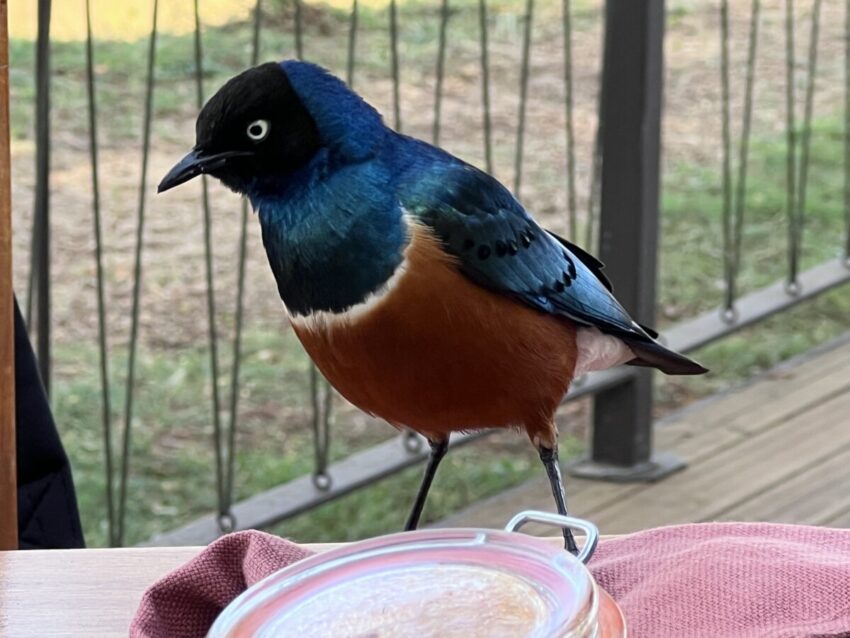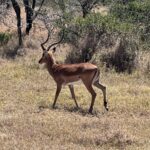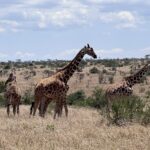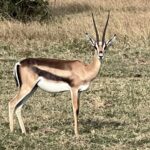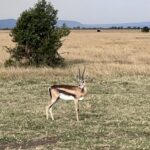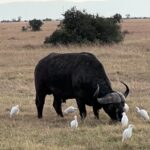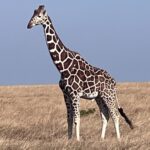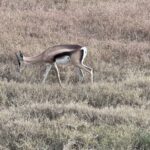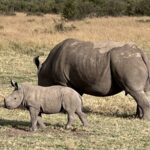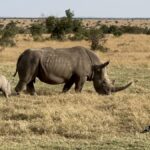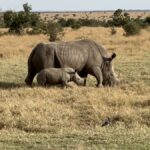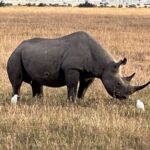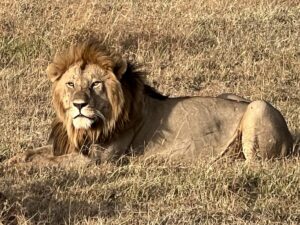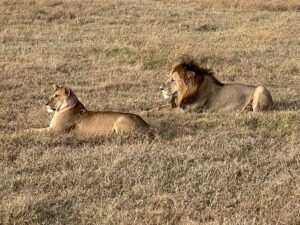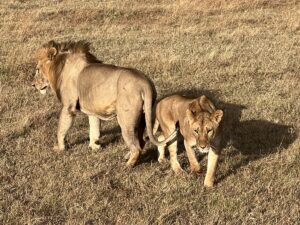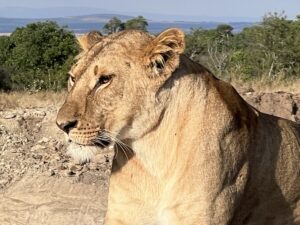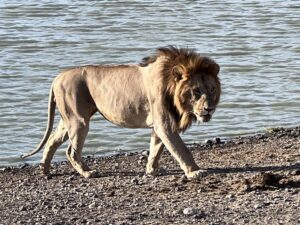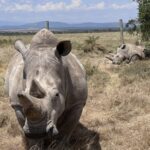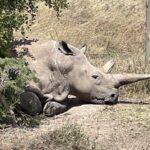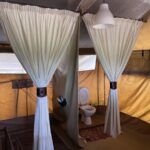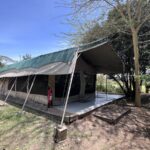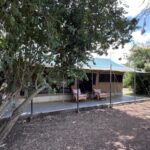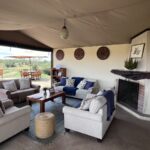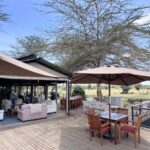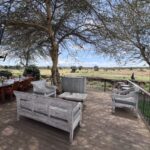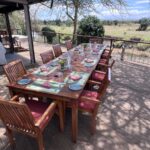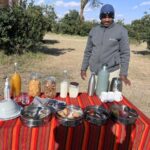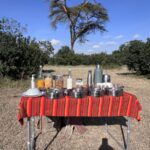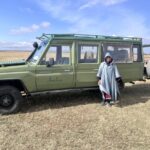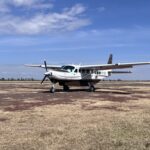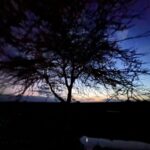Within easy access to the frontier town of Nanyuki and only three hours north of Nairobi, Ol Pejeta Conservancy is one of the most convenient wildlife destinations in Laikipia and Kenya. “Ol Pej,” as it is fondly called, is a 360 km2 (140 mi2) non-profit conservancy of flat savannah interspersed with occasional acacia trees and riverine woodland, all with the iconic backdrop of Mount Kenya behind. Here you come across the reticulated giraffes who have a different more distinct pattern compared to the normal giraffes we encountered in Amboseli. Then of course we have the Thomson’s gazelles, the Grant’s gazelles and buffalo! It’s very easy to become blasé about all these beautiful animals. Plus the amazing encounter we had with a lion and lioness!!!
This conservation-minded working ranch has all Big Five present as well as one of one of East Africa’s most successful rhino conservation projects, it is home to the last two remaining northern white rhinos.
Originally a cattle ranch owned by Lord Delamere, the ranch has gone through various owners until 2004, when UK based conservation organisation Flora and Fauna International in conjunction with Arcus purchased the land with a view to becoming a Kenyan-owned operation benefiting local communities and conserving the wildlife heritage of Kenya. The entire conservancy has an electric fence with a small gap as a migratory corridor, which minimises human- wildlife conflict and protects the rhinos. The conservancy works very closely with the Lewa Wildlife conservancy and operates similar anti-poaching units.
In 1993, Ol Pejeta opened a dedicated chimpanzee sanctuary on the ranch to look after orphaned chimpanzees and is the only place in Kenya to see these great apes. My friend Denise adopted Max, pictured below, who had lived his first 10 years in a cage. When rescued Max could not stand as his spine was damaged due to being kept in the small cage, so he could not be released back in to the wild. He now lives happily in the sanctuary and loves mangoes. If he is given avocados he throws them back!! A bit of a character is our Max!!
We spent a wonderful morning observing these two magnificent animals. They even had a quick dalliance for our eyes only!! Apparently this happens every 20 minutes for a week during the mating season. The lion seemed to be devoted to his lioness.
Ol Pejeta is home to the largest population of black rhino in East Africa, and conversely, the last two northern white rhinos in the world.
The first successful production of a rhino embryo in 2018 has signalled hope for the future of the northern white rhino, which with only two females remaining on the planet, is now functionally extinct. Najin and Fatu, who reside at Ol Pejeta, are part of the ovum pick-up project, harvesting eggs from them both, to produce pure northern white rhino blastocysts where both eggs and sperm are from northern white rhino.
There is hope, that in the future, the laboratory-created embryo will be successfully implanted into a southern white rhino, who will act as surrogate, to bring the northern white rhino back from the brink of extinction.
On the banks of the Ewaso Nyiro River in central Kenya’s Laikipia region lies the atmospheric Ol Pejeta Bush Camp where we stayed. There are seven tents (including one family tent) at Ol Pejeta. Each has an en suite with flushing toilets and showers operated by solar. Beds are snug with extra blankets and a hot-water bottle slipped in during turndown. The tents have spacious decks where we whiled away a few hours in the afternoon, just listening to the sounds of the bush. The bird set as the featured image on this post is a Superb Starling and has the most amazing colours. It bravely came to our breakfast table and started helping itself to our muffins!!
A morning game drive is not complete without a bush breakfast organised by our guide, Robert!!

